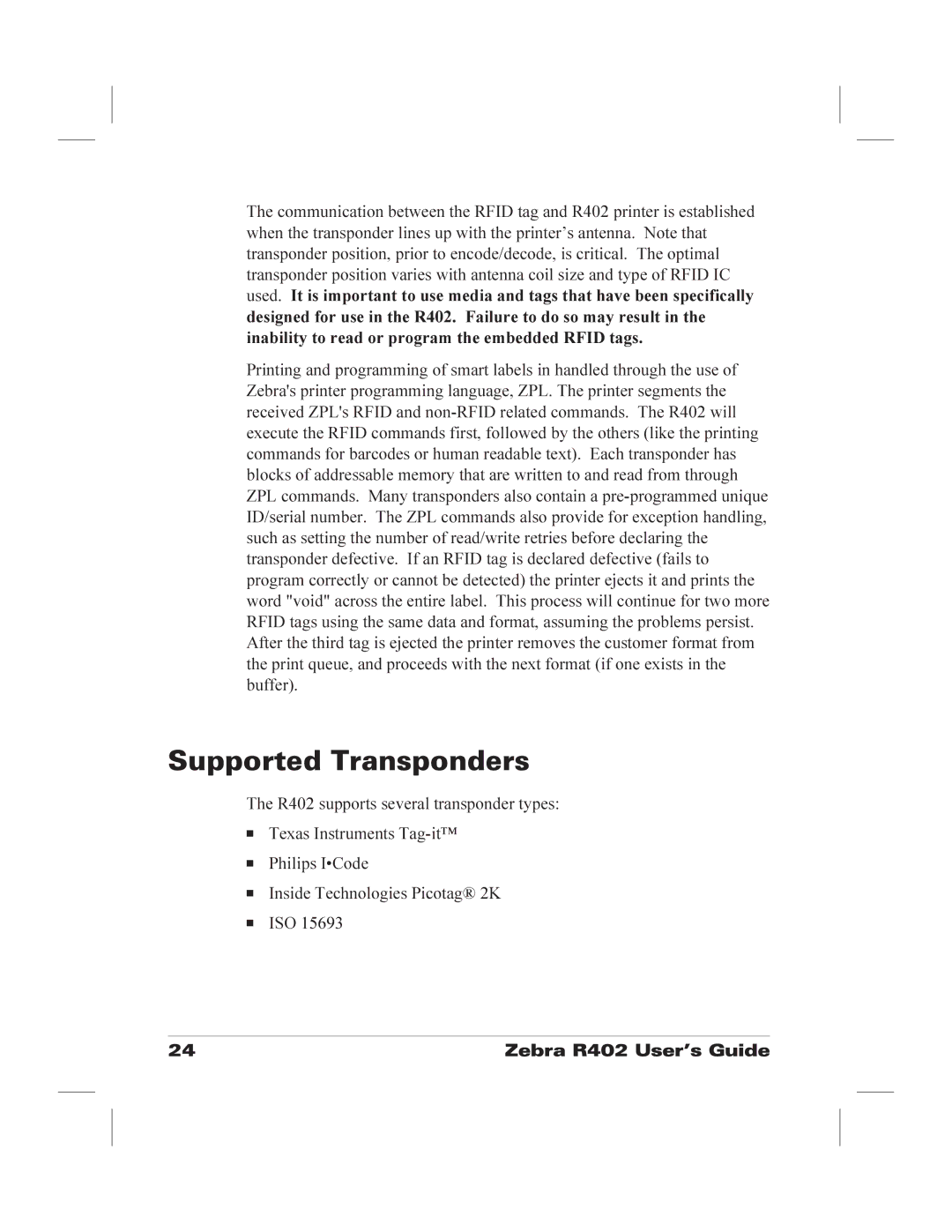The communication between the RFID tag and R402 printer is established when the transponder lines up with the printer’s antenna. Note that transponder position, prior to encode/decode, is critical. The optimal transponder position varies with antenna coil size and type of RFID IC used. It is important to use media and tags that have been specifically designed for use in the R402. Failure to do so may result in the inability to read or program the embedded RFID tags.
Printing and programming of smart labels in handled through the use of Zebra's printer programming language, ZPL. The printer segments the received ZPL's RFID and non-RFID related commands. The R402 will execute the RFID commands first, followed by the others (like the printing commands for barcodes or human readable text). Each transponder has blocks of addressable memory that are written to and read from through ZPL commands. Many transponders also contain a pre-programmed unique ID/serial number. The ZPL commands also provide for exception handling, such as setting the number of read/write retries before declaring the transponder defective. If an RFID tag is declared defective (fails to program correctly or cannot be detected) the printer ejects it and prints the word "void" across the entire label. This process will continue for two more RFID tags using the same data and format, assuming the problems persist. After the third tag is ejected the printer removes the customer format from the print queue, and proceeds with the next format (if one exists in the buffer).
Supported Transponders
The R402 supports several transponder types:
■Texas Instruments Tag-it™
■Philips I•Code
■Inside Technologies Picotag® 2K
■ISO 15693

